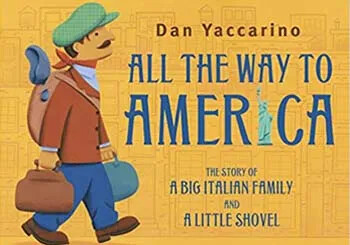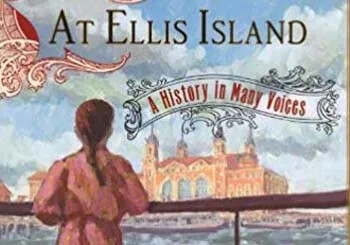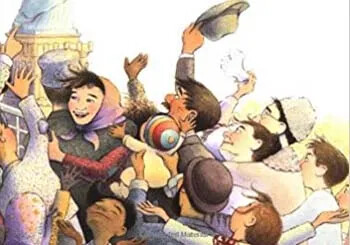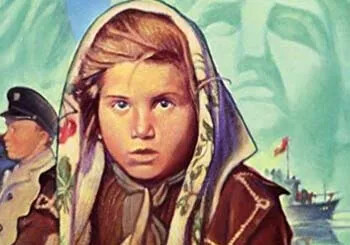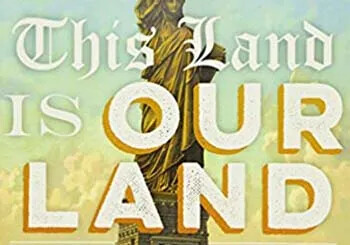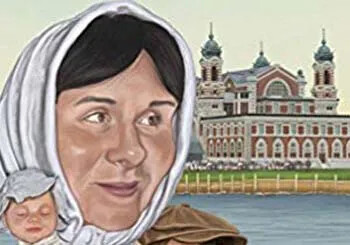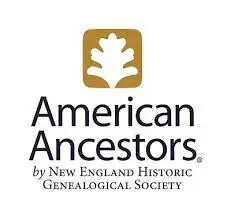The Immigrant Experience in New Hampshire
How did immigrants cope with moving to a new country and adapting to a new culture?
Immigrants often found themselves trying to strike a delicate balance. They looked forward—trying to become American—and they looked back—trying to maintain some traditions from their homeland. To adjust to their new lives and preserve parts of their culture, immigrants clustered in their own neighborhoods and created their own institutions and organizations.
The journey to America was expensive and difficult. French Canadians traveled by horse and wagon, and later, by train. Immigrants from Europe sailed across the ocean. Immigrants who arrived by ship usually entered the United States at New York and then took another ship or a train to New England, or entered directly at the port of Boston. Those who got sick on the journey were quarantined at Deer Island in Boston harbor, where many died before they could enter the United States.
Most immigrants had to start over in America with very little. Because space was at a premium on ships, immigrants arrived with only what they could carry, leaving family heirlooms, clothing, furniture, and other prized possessions behind. Many even had to sell most of their possessions to afford the passage. Until they saved enough for their own apartments, they had to live in crowded conditions with extended family or in boardinghouses. For those who had been farmers in their home country, living in New Hampshire cities and working in industrial jobs was a completely new lifestyle.
This difficult transition was eased by recreating community and family ties in their new homes. Immigrants found comfort by living, working, and socializing with people from the same country, or even the same town or village. Often, the head of household immigrated first to establish himself and then sent for his immediate family. The extended family then followed, as well as neighbors and friends, because a support network in America was already present. Sometimes nearly entire villages would relocate to the same neighborhood in the United States.
An example is Portsmouth’s Jewish community, which was made up largely of immigrants from eastern Europe who arrived in the late 19th and early 20th centuries. In the 1910s, the Puddle Dock neighborhood, now Strawbery Banke, was the center of Jewish life in Portsmouth. This community included the extended Shapiro family. Samuel Shapiro had emigrated from Russia in 1898 and sent for his wife, Ida, three years later, around the same time that his brother Abraham also joined him in Portsmouth. Abraham later married one of Ida Shapiro’s sisters. As Portsmouth’s Jewish population increased, the Puddle Dock neighborhood included kosher butchers, Jewish grocery stores, and a Jewish bakery.
In mill towns, like Nashua, Manchester, Dover, Keene, Berlin, or Laconia, immigrants typically lived together with large extended family and others from their home country. Many also worked together in specific workrooms in the mills.
In Manchester, for example, Park Common (renamed Kalivas Park in 1940) became the cultural center of Greek life. Many Greek immigrant families lived in the neighborhood around the park, which functioned as a town square for the Greek community, with traditional taverns, coffeehouses, and other important institutions located on streets bordering the park.
Immigrant communities also formed formal religious organizations and houses of worship, social clubs, and mutual aid societies, where they could go to speak their native language, maintain important cultural traditions, and provide charity to neighbors in need.
Mutual aid societies were member-based organizations that provided a social as well as charitable function. Members paid dues and received assistance in the case of an illness or death in the family. These organizations also granted scholarships, provided language classes for children, and hosted social functions. Some examples include L’Union St. Jean Baptiste for French Canadians in Manchester, the Polish American Citizens Club in Nashua, or the Pericles Club for Greeks in Manchester.
Perhaps the most famous organization in New Hampshire created by and for an immigrant community is La Caisse Populaire, Ste-Marie, or “the people’s bank,” now known as St. Mary’s Bank. The first credit union in the United States, La Caisse Populaire opened its doors in Manchester in 1908. It was organized by a French-Canadian Catholic priest to provide his parishioners with wider access to credit. The other banks discriminated against French-Canadian immigrants and did not extend credit to them. For just $5, the price of one share of capital stock, anyone could become a member of St. Mary’s Bank and deposit their savings or be eligible for a loan to buy a home or establish a business. Membership grew rapidly, and St. Mary’s moved from operating out of one room in the home of its first president to its own large, three-story building by 1930, when it had over $1 million in assets and several thousand members. By then, the credit union movement had spread to underserved populations in other towns and cities across the nation.
Immigrant groups often preferred to attend religious services where the priest, minister, or rabbi spoke their language. For example, Father William McDonald, born in Ireland, founded St. Anne’s parish in 1848 for Manchester’s growing Irish Catholic community. Two decades later, this pattern was repeated with the creation of St. Augustin’s parish to serve the rising French-Canadian population in Manchester. St. Augustin’s was led by Quebec-born Father Joseph Chevalier. It was repeated again in the 1880s with the founding of St. Raphael’s parish on the west side of Manchester for the area’s growing German population.
Portsmouth’s Jewish community initially held religious services in private homes. The community organized Temple Israel, which is recognized as the first permanent Jewish house of worship in the state, in 1905. The congregation became the center of religious, cultural, and social life for its members, from Hebrew school for children to ladies’ societies that did fundraising and charity work.
For Catholic and Jewish immigrants who found themselves transplanted to overwhelmingly Protestant New Hampshire, these religious institutions not only allowed them to worship in their native language with their native traditions but ensured that they could provide religious education to their children. These faith communities were also a source of support in the face of discrimination and hostility.
Immigrants to New Hampshire created groups to preserve cultural traditions as well, such as the German Turnverein, or gymnastics clubs. The first Turnverein in New Hampshire was founded in Manchester in 1870. Its members traveled to compete with Turners in other cities and made connections in the United States beyond Manchester.
Immigrants from the same country forged these close ties even in small towns where there were not enough people or funds to create a formal organization. For example, Epping, in the seacoast region, had a relatively small Italian community in the early 1900s; just 100–150 people out of a population of 1,600. Most Italians in Epping came to work in the brickyards. The area around Epping’s Star Brick Yard was known as Little Italy. One Italian family rode the train to Portsmouth each month to purchase a large amount of Italian foods at the markets there and then returned to Epping and dispersed it among several other families.
Many immigrant groups also published newspapers in their native language, including L’Avenir Canadien (French, 1889 to 1949), Anzeiger und Post (German, 1896 to 1942), and Ergatis (Greek, 1920s and 1930s), which provided news from the old country and advice to new arrivals.
Immigrant neighborhoods—whether in large cities like Manchester or small towns like Epping—provided comfort and security. The familiar languages, customs, and foods helped new arrivals adapt to their often disorienting, crowded, and unfamiliar surroundings, while mutual aid societies helped protect members of their community in case of emergency. These networks of support, both formal and informal, also helped immigrant communities cope with the backlash from native-born Americans.
